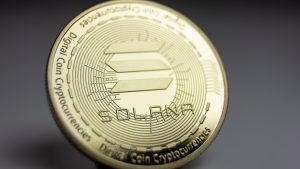- Bitcoin (BTC-USD): With institutional support behind BTC, it’s the name you can trust, relatively speaking.
- Ethereum (ETH-USD): Both tied to a utilitarian platform and mainstream credibility, ETH appears very enticing.
- Tether (USDT-USD): As cryptos swing higher, the passive income case for stablecoins is more attractive.
- XRP (XRP-USD): Though the legal narrative is ambiguous, the market supports the controversial XRP.
- Solana (SOL-USD): Futures trading dynamics may bode well for SOL prices.
- Avalanche (AVAX-USD): Potential new uses leveraging Avalanche technology could lift AVAX.
- Dogecoin (DOGE-USD): With DOGE trading on a key technical level, it might become a speculative favorite.

After several months of disappointing performances, the cryptocurrency sector appears to be on the cusp of yet another remarkable rally. Following a stunning rise until late last year, cryptos then demonstrated weakness as fears that the Federal Reserve will raise benchmark interest rates hit risk-on assets hard. Later, soaring inflation and war in eastern Europe dampened what enthusiasm was remaining.
So, why are cryptos just now making what appears to be a comeback? After all, none of the major headwinds appear close to being substantively addressed. In my view, investors of virtual currencies may have come to grips with the volatility.
Similarly, cryptos may have reached the end point of their own grief processing. Now that participants may have accepted the nature of the new normal — an ongoing pandemic, sharply rising consumer costs and bloodshed in Ukraine — they are looking forward to what the future may bring. Put another way, there’s a chance that the present dynamics are about as bad as they can get.
To be clear, no one can say that for certain. However, cryptos are trading as if that’s the case. Therefore, below are the major names to pay attention to this week.
Bitcoin (BTC)

As you know by now, cryptos are inherently risky. While the underlying blockchain technology commands considerable potential in disrupting current financial infrastructures, the lack of regulation and insurance in this space leaves a Wild West framework to contend with. Let the buyer beware.
Nevertheless, Bitcoin (BTC-USD) has emerged as the most stable and trustworthy digital asset among all cryptos. Part of that, of course, is that BTC is the originator of the great decentralization pivot. But it’s also due to the coin’s mainstream acceptance and integration. You’re going to be hard pressed to find someone who hasn’t heard about Bitcoin these days.
According to the Wall Street Journal, institutional investors are taking note. No longer a joke or niche segment, interest among the alpha dogs of finance is moving into cryptos, specifically Bitcoin and other high-level assets. Given such robust support, BTC is a great place to start building your crypto portfolio, assuming you have accepted the sector’s inherent wildness.
Ethereum (ETH)

Although Bitcoin emerged as a proof of concept that peer-to-peer transactions of a financial nature could occur between two parties that don’t know nor trust each other, the original blockchain architecture eventually showed its weaknesses. Cumbersome and unable to accommodate the surge in interest in BTC without incurring compromises such as high transaction fees, many developers turned to alternatives.
So far, Ethereum (ETH-USD) has become the platform of choice for utilitarian protocols. While next-generation blockchain projects have emerged to challenge Ethereum’s supremacy, the fact of the matter is that at time of writing, ETH commands a market capitalization of over $400 billion. Nothing else thus far comes close.
In other words, Ethereum isn’t just focused on utility. It also enjoys significant mainstream credibility as an investment and a digital store of value. Other blockchain platforms are undoubtedly faster, more scalable and cheaper to utilize. However, ETH owns a significant “branding” advantage over other lesser-known cryptos, making it a close runner-up to Bitcoin in terms of long-term investment potential.
Tether (USDT)

Belong to a special class of cryptos known as stablecoins, Tether (USDT-USD) is a digital asset pegged to the U.S. dollar on a 1:1 ratio. As such, USDT carries significant practicality since crypto investors don’t need to switch back to fiat, only to switch back again to blockchain-based assets whenever new opportunities arise.
Additionally, switching between fiat and cryptos incurs a paper trail (which may be taxable) and it perhaps most worryingly, the transition is slow. Since virtual currencies trade at the speed of the internet, you don’t want your funds being held up by antiquated “analog” banking mechanisms. Tether gives you immediate purchasing power by always keeping your wealth in the blockchain, so to speak.
But the recent rise in cryptos brings another benefit to stablecoins like Tether. Since USDT and its ilk buttresses multiple crypto transactions, demand for stablecoins should rise overall. That might mean you can earn handsome rewards by loaning out your USDT in return for monthly interest payments.
Still, do note that Tether has extreme risks due to paper backing concerns. Therefore, approach responsibly.
XRP (XRP)

Not to be left in the cold, XRP (XRP-USD) has been making headlines recently — largely positive. Over the trailing month since the evening of the March 28 session, XRP is up 13%. Trading hands at 86 cents, it’s within striking distance of the psychologically significant $1 level. The question is, will it get there?
Obviously, most of that equation depends on the ongoing court drama between the Securities and Exchange Commission and Ripple Labs, the originator of the XRP coin. Just to recap, the SEC alleges that Ripple used XRP as a clever tactic to sidestep securities laws. On the other hand, Ripple is defending itself, claiming that XRP is a genuine cryptocurrency based on prior issued guidance — including opinions from former SEC chairman Jay Clayton.
If Ripple is successful in defending itself, XRP would then be the only crypto with legal clarity. That should be excellent news for XRP. However, if Ripple loses, it could steamroll the controversial asset. Clearly, though, the market views XRP as a future winner.
Solana (SOL)

Framed as one of the more exciting cryptos that can take on the dominance of Ethereum, Solana (SOL-USD) is among the next-gen blockchain architectures that can potentially address the shortcomings of ETH. While representing the backbone of decentralized applications — pioneering concepts such as smart contracts — Ethereum became incredibly expensive to utilize last year.
Due to soaring transaction fees called gas, many developers turned to alternatives to keep expenses reasonable. That’s where Solana enters the picture. Providing enormous speed, scalability and security, the SOL network is also incredibly cheap to leverage. Therefore, many developers migrated to Solana to craft various blockchain-based initiatives.
Even better, recent trading dynamics in the futures market suggests SOL may swing higher. Apparently, many traders took negative bets on SOL, creating problems when its price recently jumped northward. Given that other cryptos are rising — likely in sympathy with Bitcoin and other benchmark assets — Solana could tag along for the ride.
Avalanche (AVAX)

Another rival to Ethereum — and by extension Solana — Avalanche (AVAX-USD) has been making plenty of noise since the tail end of 2020. Back during those less-complicated days, AVAX was trading hands for around $3. At the height of its power, the coin eclipsed the $130 barrier. However, during the bottom of the year so far, AVAX was trading below $60.
That narrative appears to be changing for the better — at least if you’re an AVAX bull. The token recently cleared the $90 level, with the natural upside target being the three-digit threshold. Should it get there, it would represent a remarkable turnaround in just a few months’ time.
Moreover, it’s not just technical underpinnings that support the Avalanche price. Fundamentally, the development of subnets utilizing Avalanche’s architecture could be a gamechanger. In short, subnets are decentralized solutions that allow developers to build and deploy application-specific blockchain networks.
The customization potential of subnets could facilitate greater practicality and efficiencies for startup enterprises, expanding Avalanche’s potential reach. It may be something to consider for longer-term investors.
Dogecoin (DOGE)

Perhaps everyone’s favorite canine-inspired meme coin, Dogecoin (DOGE-USD) evolved from a project that started off as satire to one of the most commonly discussed cryptos. And while you might not appreciate the cartoonish qualities that DOGE exudes, its influence is no laughing matter.
As of this writing, DOGE is ranked number 12 in terms of market cap with over $19 billion to its name. It certainly looks like Dogecoin will have the last laugh against its detractors.
Still, it’s well worth examining whether Dogecoin has the potential to move higher. Presently, DOGE trades a bit above the 14-cent level, which is where the lowest horizontal support line is situated. Ideally, though, you would like to see DOGE move above the 17-cent level, which has acted as long-term support last year.
Anything below 17 cents is subject to reasonable skepticism. However, cryptos have mostly played follow the leader throughout their existence. Thus, if Bitcoin and other benchmark assets continue to march higher, it’s possibly that DOGE could ride their coattail.
On the date of publication, Josh Enomoto held a LONG position in BTC, ETH, USDT, XRP and DOGE. The opinions expressed in this article are those of the writer, subject to the InvestorPlace.com Publishing Guidelines.
from WordPress https://ift.tt/5oWwHAQ
via IFTTT







No comments:
Post a Comment